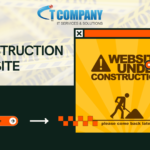
Table of Contents
ToggleArtificial intelligence (AI) is transforming the profession of UI/UX design, allowing Brand Designers to create exceptional user experiences while also automating their design processes. Designers may better their craft and stay competitive in today’s quickly changing internet market by leveraging AI-powered tools and methodologies.
While the potential of AI is limited to the mind, corporations almost always use it to simplify processes, improve performance, and cut costs. This has raised concerns about job stability and left many people wondering how it would effect them.
This article analyzes how UI/UX Brand designers may successfully use AI and highlights how it might improve design outcomes.
AI’s Role in UX Design
AI is transforming the computing industry by automating jobs that were traditionally handled by humans, and UX is no exception. It allows UX designers to streamline time-consuming tasks such as classifying user actions, anticipating future behaviors, and gathering relevant information from large customer databases, freeing up resources for end-product change.

AI is an area of technology that enables machines to reason, utilize logic, and perform tasks in a way similar to human intelligence. Artificial intelligence (AI) has an influence on every aspect of our daily lives, from browsing history-based product recommendations to automated chatbots for customer support.
UX designers’ livelihoods are safe, and the World Economic Forum predicts that AI will generate 97 million new employment by 2025. In conclusion, AI is likely to persist and ease the work of UX Brand Designers.
How do UI/UX brand designers use AI to optimize their designs?

1. Create User Personas
AI helps UX designers quickly create data-driven user profiles by providing useful user insights. For example, AI systems such as Smartone may scan user chats on social media sites and forums and convert their emotions into actionable information.
UX designers may utilize these results to create client profiles that will help them improve their designs for the greatest impact.
2. UI/Product Writing
AI is rapidly decreasing the gap between design and content with the aid of writing tools such as Writer and CopyAI. Designers can now produce meaningful, audience-specific content that is optimized for both customers and search engines, eliminating the Lorem Ipsum placeholder text that was previously used to fill up wireframes.
AI may also propose words based on the situation, exposing designers to a larger lexicon with less research.
3. Customer Data Analysis
UX designers no longer need to manually traverse information thanks to AI technologies like Research AI. Instead, they may easily and quickly collect vast volumes of user data.
AI can monitor website visits and interactions, predict user behavior, and find trends in user data that might otherwise go undetected. UX designers may quickly understand how customers behave and interact with their company’s products by speeding up the analysis of user data, allowing them to make informed design decisions.
4. Design and User Testing
Various AI systems, such as Visual Eyes, can assist with user evaluation. These include quickly spotting opportunities for consumer behavior patterns, providing comprehensive simulations of user operations while taking into account a range of input cases, and speeding previously time-consuming activities such as user input collection. UX designers may enhance their original designs to capitalize on the launch success by better understanding how users interact with the product.
AI Tools for UI/UX Designers:

1. ChatGPT – User Research
In any discussion of AI tools, ChatGPT is the tool that everyone is talking about. ChatGPT has shown to be a useful design tool, particularly when analyzing consumers, in addition to being popular across industries. ChatGPT analyzes information from customer-chatbot interactions using natural language processing to identify patterns in client behavior and preferences.
2. Uizard – prototype
Uizard’s artificial intelligence-driven design tools allow you to see, alter, and verify your designs. When you provide a design mockup, the program will produce virtual designs with flawless transitions and animations (no coding required). Paper wireframes may be scanned and transformed to digital format for easy group modifications utilizing the program.
3. Khroma – Color Palettes
Khroma allows brand designers to create attractive, brand-consistent color palettes with only a few clicks. It goes a step further by determining which colors you prefer (and dislike), albeit color palette generators are not new.
This also employs complex algorithms to generate limitless options. You may also master color combinations based on pictures or mood boards and alter the hues using moveable sliders to your satisfaction.
4. Fronty – Transforming drawings into code
Fronty, the world’s first picture-to-HTML converter, utilizes artificial intelligence to generate source code from a single image or screenshot in minutes. This saves numerous hours. Fronty also includes a no-code editor, which allows you to create, edit, and publish complex websites without the need to deal with a web expert.

Wrapping Up
Every UX Brand designers toolkit should contain AI. AI may provide major insights that would otherwise go unnoticed utilizing automated techniques and advanced algorithms, allowing UX designers to swiftly create tailored, individual digital experiences in weeks, rather than months.
It is acceptable to use AI at each stage of the product design process. Still, it’s worth looking into different tools to see how AI may best assist you reach your design goals—especially if you want to stay ahead of the curve.
IT Company’s brilliant UI/UX designers are always pushing the boundaries of AI via their ingenuity and understanding of contemporary customer demands. We provide mobile app solutions that give consumers excellent user experiences and encourage frequent use to achieve results.





